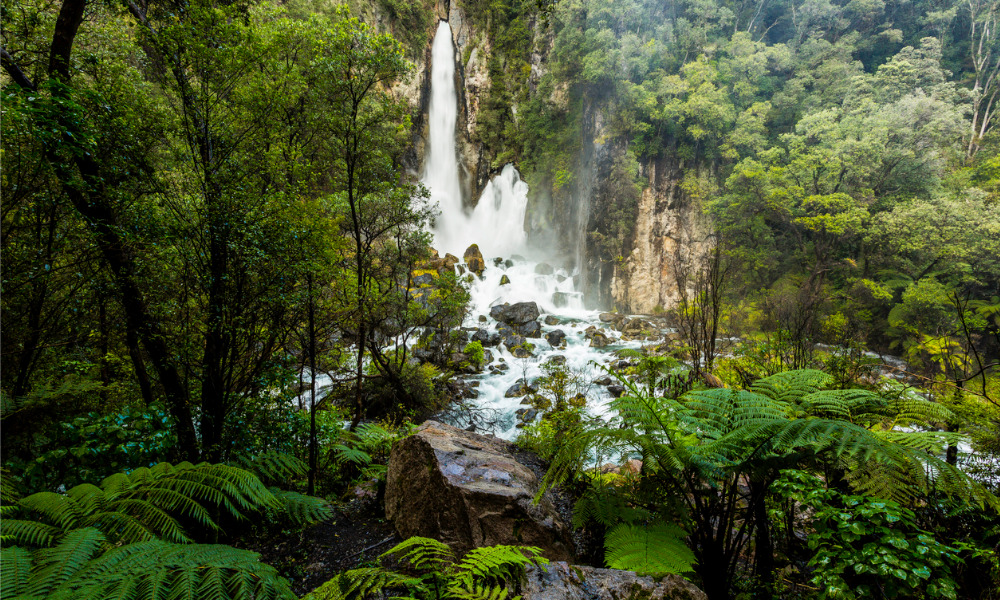The country's smaller centres show the biggest capital gains over 10 years, new data shows

Looking for capital gains in the property market over the past 10 years? Then your best bet just might have been Kawaru.
New data released by Realestate.co.nz, which showed the change in asking prices for areas around New Zealand since 2012, found the country’s smaller centres had the biggest capital gains of the decade.
Read more: Queenstown, Auckland record biggest capital gains
Kawerau led the table with a 282.1% increase, to an average asking price of $361,441, while 34 other areas saw price increases more than double, Stuff reported.
Posting the most significant increases aside from Kawerau were South Wairarapa, which was up 155.5%; Carterton, 148.3%; Tararua, 144.9%, and Central Hawkes Bay, 143.5%.
Central Otago and Dunedin were the only South Island centres that had seen their prices double – probably due to population. Realestate.co.nz spokeswoman Vanessa Williams said larger populations in the north meant there was more demand.
In Auckland, Waitakere, Waiheke, and Papakura all had their average asking price more than double over 10 years, rising 125.5%, 123.6%, and 117%, respectively.
A decade ago, the average prices of Waitakere and Papakura were $506,090 and $480,687, respectively, which was just over half the $781,109 of central Auckland, Williams said.
But that affordability had helped push prices up.
The average asking prices in these regions rose faster than those in central Auckland over the past 10 years, closing the gap between prices in these areas.
The average asking prices in the central suburbs were now more than $1.5 million, Williams said.
“Although Waiheke offers favourable commuting options, unlike Waitakere City and Papakura, where lower prices have been a factor, I suspect Waiheke’s popularity has been driven by those looking for a lifestyle change or perhaps even a second home,” Williams told Stuff.
Tauranga, Rotorua, and Whakatane also had their prices more than double.
“In Tauranga in particular, property prices started to lift quite rapidly from about 2015 – which is also when we started to see the growing trend of Aucklanders relocating to the beachside city in search of affordable housing,” Williams told Stuff. “The annual average asking price in Auckland City reached over $1 million for the first time in 2015, so it is no wonder Aucklanders started to look to the regions around that time.”
Prices in South Waikato, Waikato, Hamilton, and Matamata-Piako lifted 127.5%, 122.5%, 119.4%, and 118%, respectively, which Williams said was driven by the popularity of lifestyle properties there.
In Wellington, average asking prices since 2012 rose 136.7% in Kapiti Coast, 128.3% in Upper Hutt City, 127.5% in Lower Hutt City, and 108.2% in Porirua.
The average asking price in central Wellington, however, was up 85.3% in the 10 years to 2021.
“What we have seen in the Wellington region is many of the outlying areas ‘catching up’ to central city prices, which typically sit above those seen in outlying areas,” Williams told Stuff. “Still, the average asking price in Wellington City in 2021 was $1,023,166 – up to $471,069 compared to 2012.”
In the case of Canterbury, price growth was slower over the last 10 years than in other regions. None of its districts also saw their prices double over the last decade.
“As part of the rebuild efforts, we saw an oversupply of homes in Canterbury, and this has likely impacted the rate of average asking price growth in the region,” Williams told Stuff. “The property market tends to operate on supply and demand. When supply is low, demand and prices usually increase. But when buyers have a lot of choice – as is the case when there is an oversupply – prices tend to drop.”
Gareth Kiernan, Infometrics chief forecaster, said few factors could influence which areas appeared to be performing best.
“Firstly, the smaller nature of some of those markets means that there’s likely to be more variability in their rates of price growth than in the larger urban centres,” Kiernan told Stuff
Meanwhile, toward the bottom of the list were Buller and Hurunui.
“The small and highly concentrated nature of their economies mean that they can be vulnerable to shifts in the economic fundamentals or buyer demand – either good or bad,” Kiernan said.
Kiernan said compression of rental yields in recent years encouraged investors to turn to cheaper areas.
“This trend has seen more investors looking at the relatively high yields in towns like Kawerau and being willing to bid up prices because the yields look that much more attractive than in the bigger urban centres,” Kiernan told Stuff. “Of course, there is a risk with the smaller market that your property might be vacant for longer between tenants, undermining the effects of the better return when the property is occupied. There’s also the risk associated with property prices in a small town, that a major employer could close or there could be a lack of buyers when you want to sell the house, limiting your ability to fully realise the capital appreciation of the property that you thought had occurred.”
There could also be a timing issue, he noted.
In March 2012, CoreLogic data showed Kawerau’s prices were still 7.6% above their March 2009 level, but Auckland was 14% above that.
Read next: CoreLogic reports patchy price falls across NZ suburbs
“In other words, Auckland’s house price acceleration began before the rest of the country and, if the previous boom is anything to go by, Kawerau will be one of the last to slow (but also hardest to fall),” Kiernan told Stuff. “Of the top five areas mentioned by Realestate.co.nz, only Carterton’s result beats Auckland if we measure peak to peak. Measuring peak to peak (or trough to trough) is the fairest way of comparing regions over time – otherwise you run the risk of only picking out part of the growth cycle and getting a skewed picture.”



